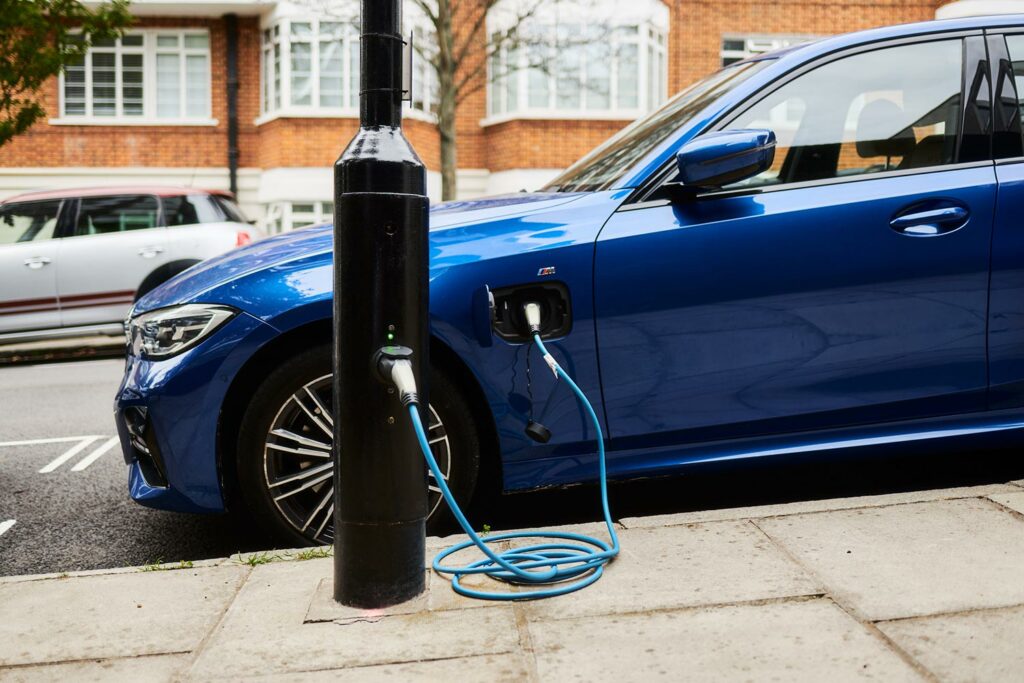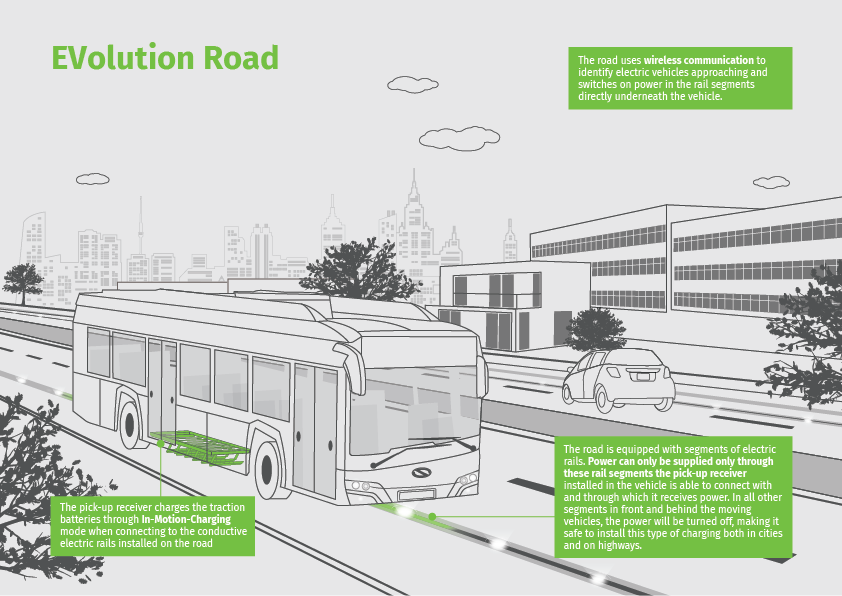Depot charging
Overnight depot charging is the simplest and most efficient way to power the e-bus fleet.

Chargers in the city
Electric, hybrid and hydrogen fuel cell vehicles are increasingly venturing to replace classic conventionally powered models. In addition to changing the way we think about our purchasing decisions, we also need to expand the charging infrastructure itself.
Battery recharging stations are needed everywhere in cities, wherever people work and play. A well-planned network of charging stations ensures that transportation systems, especially public transportation, operate efficiently and effectively. Uninterrupted service and on-time buses are critical if residents want to use them.
Can the urban charging stations be designed to be easily accessible and blend in with the existing street architecture? Today, we take a closer look at innovative solutions that work for residents without unduly disrupting urban space. Is it possible? Let’s find out!
A great inspiration is the example of car chargers integrated into… street lamps. Similar solutions already exist in Berlin, Dublin and London. The district of Westminster even has the UK’s first “electric street” (“Electric Avenue”). Sutherland Avenue is a residential street where street lights have been fully converted into electric vehicle charging points. The project effectively transformed 24 lampposts using the city’s existing infrastructure. Remarkably, these ‘electric street lights’ can charge up to 5kW and take less than two hours to install. There are already more than 2,000 of these charging points in Westminster.

Many of the innovative proposals call for a new building typology that ambitiously combines electric car chargers in the city with facilities such as gyms, playgrounds, galleries, workplaces and food and drinks outlets. Meanwhile, the Chinese cities of Jinan and Zhengzhou have addressed the lack of space for charging infrastructure by building charging stations under elevated flyovers.
Innovative ideas are also at work in the public transport sector. Designers can directly integrate electric bus charging stations into buildings, such as bus stations, shopping centres or office buildings. For example, dedicated charging points can be located in an underground car park. The chargers are invisible to people using the car park but accessible to electric buses.
What if the whole street was a charging zone? Yes, such solutions are already being tested! Where? In Sweden, Germany and Italy. On the island of Gotland, off the coast of Sweden, a road wirelessly powers and charges electric buses as they travel along. The slower the vehicle travels on the street, the more it is charged – so this solution will work best on busy urban thoroughfares. A similar section has also been built in Sweden, in the city of Lund, as part of the Evolution Road programme in collaboration with Solaris. Here, conductor rail segments embedded in the road are activated when a vehicle passes over them. Using wireless communication, the segments in front of and behind the vehicle are inactive. This solution is therefore safe in congested urban traffic.

The availability of charging stations is one of the critical issues in the dynamic transition to battery-powered vehicles. Consideration should be given to ensuring that they are as useful as possible while at the same time being harmonious and integrated into the urban environment. With ideas ranging from electric street lights to entire road systems, urban charging stations can become desirable elements of public space without compromising the aesthetics of their surroundings.
Find out how to choose the right charging method for your fleet from the following articles:
Overnight depot charging is the simplest and most efficient way to power the e-bus fleet.
Opportunity charging, off-depot charging - what exactly does it mean?
In-motion charging (IMC) is another method of charging batteries in city buses. How exactly does it work?